Decision-Making in a Crisis: How to Choose Fast, Under Fire
At Squatch Survival Gear, we’ve seen firsthand that survival isn’t about luck — it’s about the decisions you make under pressure. In calm times, decision-making feels simple: you can weigh options, sip coffee, and take your time.
But when everything goes wrong — gunfire, wrecks, wildfires, floods — your body floods with adrenaline, your focus narrows, and perfection goes out the window. You don’t need every option; you need one right move, right now.
This guide breaks down the science of making decisions in normal life versus combat or crisis, drawing from military psychology, aviation, and emergency medicine — with a simple truth underneath it all:
Action beats indecision every single time.
Normal Decisions vs. Crisis Decisions
In normal life, you gather facts, weigh options, and choose deliberately. More choices usually mean slower decisions — that’s Hick’s Law, which says decision time increases as the number of choices grows.
That’s fine in the office. In the field, it can get you killed.
In a crisis, your brain flips into survival mode. Stress levels spike, narrowing your focus and sometimes boosting reaction time — up to a point.
Push it too far, and performance collapses. This is the Yerkes-Dodson Law in action: too calm and you’re slow, too stressed and you freeze. The goal is to train yourself to operate in the sweet spot of pressure — alert, focused, and functional.
Under high stress, your decision-making changes:
-
Tunnel vision locks your attention to one threat.
-
Memory and reasoning degrade, making it harder to recall procedures.
-
Options vanish as your environment changes in real time.
To survive, you need a system that works even when your brain doesn’t.
Battlefield-Proven Decision Frameworks
The OODA Loop
Observe, Orient, Decide, Act.
Developed by Air Force Colonel John Boyd, this loop keeps you cycling faster than the chaos around you. Keep observing, orienting, deciding, and acting — faster than the situation can overwhelm you. The secret? Speed and adaptation beat hesitation.
Recognition-Primed Decision Model (RPD)
Developed by Dr. Gary Klein, RPD explains how experts make split-second calls without comparing dozens of options. They recognize patterns, visualize the outcome, and move.
You don’t need endless analysis — you need experience, pattern recognition, and the confidence to act.
The Science of Stress and the Tools to Counter It
-
Cognitive Tunneling: Your field of awareness collapses. Break it with a deliberate head-to-toe scan or verbal cues.
-
Working-Memory Drop: You forget things you know. Use checklists, mnemonics, and simple steps.
-
Choice Overload: Too many options cause paralysis. Pre-decide critical actions — A or B — before stress hits.
When adrenaline spikes, fall back on trained habits.
If you train chaos, chaos becomes familiar.
The Crisis Playbook
Phase 0 — Before the Crisis
-
Run a premortem: imagine your plan fails, list why, fix it now.
-
Build checklists and keep them waterproofed in your admin pouch.
-
Stage your gear layout logically — first-needed tools go in first-grab locations.
Phase 1 — The First 5 Seconds
Control the startle response.
-
Take one deep breath (4 in, 4 hold, 4 out).
-
Run an ABC scan: Airway, Breathing, Circulation or Aviate, Breathe, Check — depending on your mission.
-
Shrink your decision space: only two real options. Pick one and move.
Phase 2 — 1 to 3 Minutes
-
Medical: Use the MARCH protocol — Massive bleeding, Airway, Respiration, Circulation, Hypothermia/Head injury.
-
Movement: Run mini OODA loops — observe, orient, decide, act.
-
Communicate clearly: “Two down, north side, moving to cover.” Clear comms save lives.
Phase 3 — Ongoing Reassessment
Every minute, break tunnel vision. Ask, “What am I missing?”
If the facts change, change your plan. Adaptation increases the odds of survival.
Train the Way You Decide
-
Two-Option Drills: Practice fast binary choices. Left or right. Move or hold.
-
Startle Inoculation: Add sudden shocks to drills. Learn to breathe, then act.
-
Premortem Huddles: Quick “If this goes wrong, it’s because ___” talks before missions.
-
MARCH Reps: Dry-run your medical skills.
-
OODA in Motion: Navigate with real-world obstacles. Rehearse until decisions are reflex.
Gear That Makes Decisions Easier
When your mind is cluttered, your gear setup should make the call for you.
-
The Gnome Chest Pack: keeps critical tools front and center.
-
Admin Pouch: holds tourniquet, flashlight, whistle, and decision cards.
-
Windstorm Whistle + Power Bank: keeps comms alive and you findable in chaos.
Every pouch, zipper, and strap should save seconds — because seconds decide survival.
Conclusion: The Final Decision
In a crisis, the illusion of too many options is exactly that — an illusion. Every choice breaks down to a binary:
Do it, or don’t. Move, or stay. Act, or freeze.
Don’t waste time fixing the leaky sink when the kitchen’s on fire. Focus on what’s critical — the one thing that will stop the bleed, avoid the ambush, or keep your team alive. Everything else can wait.
Sometimes, all your “best” options collapse in front of you. That’s when survival means choosing the best of the worst. And that’s okay — because it’s action that saves you, not perfection.
Once you’ve made your decision, move your butt.
Execute the plan aggressively, adapt as you go, and keep looping until you’re clear.
Survival doesn’t reward the perfect — it rewards the decisive.
At Squatch Survival Gear, that’s why we design American-made, Berry-compliant gear that performs when everything else fails.
Because when the world turns chaotic, the only thing you can count on is your training, your will — and your gear.

